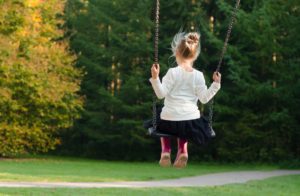People of all ages are susceptible to orthopedic problems, meaning childhood orthopedic problems should be on every parent’s radar. Even if the problem doesn’t appear, the foundation for it could be developing. Here are a few things you should watch for in your children to make sure their muscles and bones stay healthy into adulthood.
4 Common Childhood Orthopedic Problems
Adults aren’t the only people who can have orthopedic problems. In fact, child development is where many issues first begin to develop. An awkward gait at an early age can lead to issues later in life. A terrible fall can lead to stunted growth. Children are especially susceptible to orthopedic issues as their bodies develop. It might not always be evident that they have an issue, but it will rise to the surface years down the line.
In the interest of that, it’s important that parents keep watch over how their children are developing. An occasional check to see if children are developing high arches can spare them a lifetime of problems. When it comes to little ones, little things add up. If you are a concerned parent, these are the things that you’ll want to be looking out for.
Broken Bones
 Swings, monkey bars, slides. Running, jumping, biking. Football, baseball, basketball. Kids tend to be very physically active. However, they aren’t always physically co-ordinated. Falling is a natural part of childhood, and with that comes injury. It’s no secret that children are highly susceptible to broken bones.
Swings, monkey bars, slides. Running, jumping, biking. Football, baseball, basketball. Kids tend to be very physically active. However, they aren’t always physically co-ordinated. Falling is a natural part of childhood, and with that comes injury. It’s no secret that children are highly susceptible to broken bones.
However, a child breaking their bone can be much more severe than an adult. The pain is relatively the same, of course: no age can change how difficult that is to get through. What makes all the difference, though, is the development of the body. By the time an adult has reached their early 20s, there’s no more growing to do. A child is growing all the time.
When children break their bones, it is imperative that they get a cast or sling immediately. Similarly, it’s important that the cast stays on and they are given the proper amount of time to heal. A cast helps to keep the bone in place, allowing it to grow back where it’s supposed to be. Without it, a child may develop deformities.
Flat Feet
If you stare at a baby’s feet for a while, people might think that you’re weird. However, you might also notice something: all babies are born with flat feet. Over time, as they begin to use them, they will develop arches. Some children don’t, however.
Early on, this can make it difficult for the child to remain upright. They become more likely to fall, giving the impression that they have “weak ankles.” Of course, this won’t always stay. For the most part, flat feet aren’t an issue unless walking on them becomes painful for the child. It is good to have them checked out, though.
Similarly, you might notice that your child is developing extremely high arches. This is more likely to be an issue, though it tends to develop in later years. If the arch of the foot is visible from the side, then it is likely representative of a medical condition. Again, it’s good to have a doctor check up on these sort of things.
Muscle Contractions
Speaking of babies, you might notice that some newborns have muscle contractions in their neck. This is especially common in larger babies who were born from a long labor, though doctors aren’t entirely sure why. Often, this contraction will cause their head to tilt away from the affected side.
This is known an infant cervical dystonia and it ranges significantly in severity. In many cases, it will prove to be no issue at all. Often, the problem can be solved with gentle manipulation of the neck muscles. However, it does occasionally require medications, physical therapy, or a neck brace. If you notice muscle contractions in a young baby, you should speak to a doctor.
Every Step They Take
When children begin to walk is when most issues come to fruition. If you notice something awkward about a child’s gait, it could be a sign of an orthopedic problem. Toe walking is one of the most worrisome. Many children walk on their toes frequently during their second year of life, and intermittently afterward. Children who continue to do so frequently might be showing an early symptom of cerebral palsy.
Other conditions to consider are bowlegs, pigeon-toes, and knock-knees. Knock-knees and pigeon toes aren’t likely to be an issue in the early years but should be checked out if they continue. Bowlegedness can be an early sign of rickets or Blount’s disease. It is most likely to be a childhood orthopedic problem when it is more exaggerated in oneside or the other.
Children can show small signs of big problems. Know what to be on the lookout for, and you’ll be all clear.
